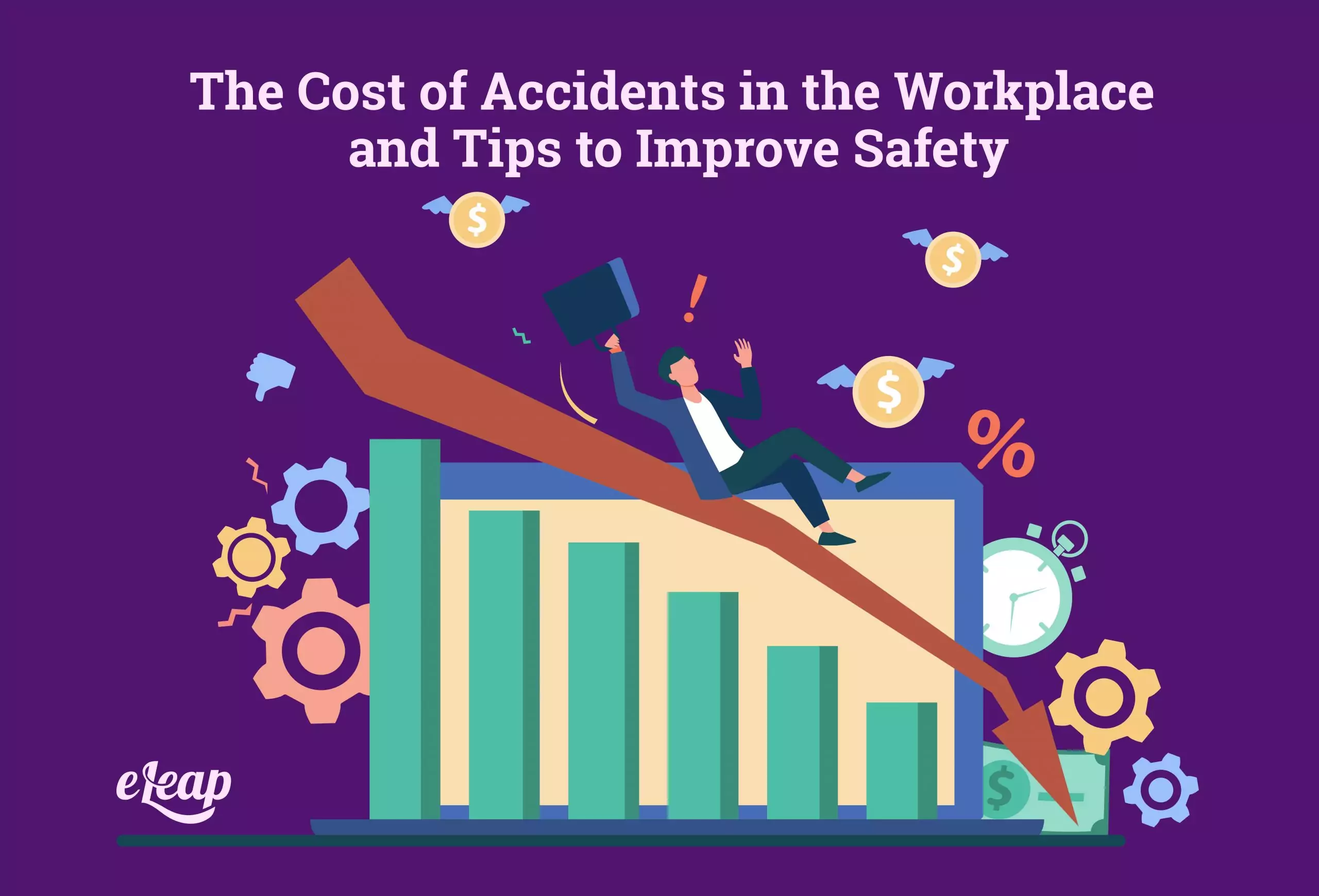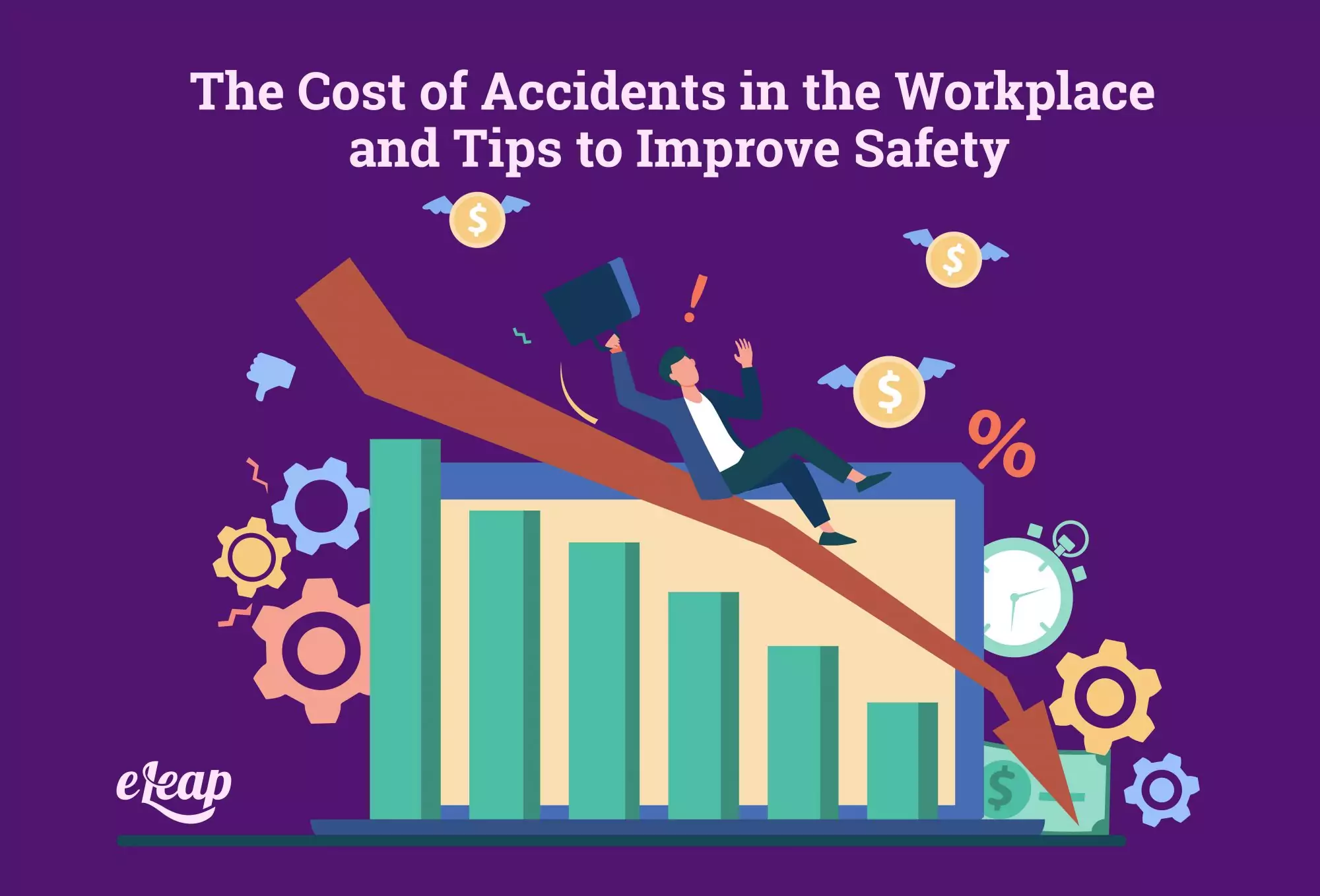The Cost of Accidents in the Workplace and Tips to Improve Safety

Every year, accidents in the workplace cost American businesses an incredible amount of money. What’s more, those costs don’t always stop with treating the injuries sustained. There are other outcomes, including fines and fees for safety violations, ongoing costs of worker’s compensation payments, and more. There are also intangible costs – damage to an employer’s brand, and the loss of skilled employees, for instance.
In a perfect world, the workplace would be a safe, productive space. However, the truth is vastly different. From offices to construction sites, workplaces are inundated with hazards and risks to employees, visitors, and others.

In this article, we will address the costs of accidents in the workplace, both tangible and intangible. We will also provide a few important tips to improve safety and reduce those costs.
The Cost of Workplace Injuries
According to the National Safety Council (NSC), employers paid out hundreds of millions of dollars related to workplace accidents in 2019 alone. In fact, the total for 2019 was $171 billion. That figure includes wage and productivity losses, administrative expenses, employers’ uninsured costs, as well as property loss costs (fire losses, for instance). The same year, employees and employers lost a total of 70,000,000 days, with a projected 55,000,000 additional days lost in the future due to injuries sustained in accidents that occurred in 2019.
Breaking Down the Costs of Injuries
When many people think about the cost of injuries in the workplace, they picture an employee who must seek medical treatment for their injury, thereby losing time on the job, plus the cost of medical treatment. However, the situation is actually much more complex, and companies are often caught by surprise at the total cost incurred with just a single workplace accident. Some of the factors that affect the cost incurred include the following:
- The cost of time required to investigate accidents
- The cost of time required to write up related reports
- Damage to, loss of, and replacement costs of business assets
- Loss of the value of goods or services produced by the employee
- The costs of vetting, hiring, and training replacements for employees unable to work
- The loss of productivity and time for those who depended on the employee as part of a team or production line
- The cost of damage to a business’s brand/reputation
- The increasing difficulty of finding quality candidates after a business has developed a reputation as being “unsafe”
As you can see, many factors drive up the total cost of workplace accidents. Even a seemingly minor accident can have major repercussions. Even seemingly minor accidents create ripples that can affect the situation far into the future.
The Most Common Types of Workplace Accidents
Another factor that many employers do not understand is the vast array of accident types and the fact that no workplace is immune to these risks. An office environment harbors risks just as much as a mining operation, although mining companies certainly face greater risks and different ones than what might be found in the average office. The 10 most common workplace accident types in recent years include the following:
- Improper handling of objects
- Falls on the same level (slip and fall, tripping)
- Hit by falling objects
- Falls to lower levels (scaffolding, ladders)
- Improper posture
- Vehicular accidents (including equipment like forklifts)
- Slips and trips without falls
- Repetitive motions (typing, using pneumatic tools)
- Collisions with objects
- Equipment in operation
The Solutions to Workplace Safety Issues
Now, it is clear that accidents in the workplace are incredibly costly, both now and in the future. Those costs can cripple companies, put pressure on the economy, and affect the quality of life for millions of Americans long after the accidents are forgotten. Thankfully, some solutions can help reduce the number and severity of workplace accidents across the nation.
Follow OSHA Guidelines
First and foremost, make sure you’re following OSHA’s workplace safety guidelines. The Occupational Safety and Health Administration updated its guidelines recently, too, so employers that previously were following them may need to verify that they are still in compliance. (download free OSHA Hazards eBook)
Know Your Risks
It is also important that employers understand the risks posed within their workspaces. No business is exempt from risk – a trip on a poorly maintained carpet can be as dangerous and damaging to the body as a fall from a ladder on a construction site in some cases. Yes, there are industries where danger is more prevalent, but no industry is risk-free.
Provide Training
Once you understand your risks and have identified them, it is important to provide your employees with safety and health training. Note that your training programs should comply with OSHA regulations at a minimum, but you can go as far beyond that minimum as you deem appropriate.
The goal is to offer engaging, interactive training content that drives home the health and safety message, but also builds skills and knowledge. The goal of this training should always be for employees to emerge with the ability to put what they learned into practice within their daily routines to avoid and report safety hazards anywhere they might encounter them.
Form a Safety Committee
You can only expect your employees to do so much regarding eliminating safety hazards during their regular duties. Organizations must create a formal safety committee that will be responsible for important tasks. These can run the gamut from verifying fire extinguishers have been inspected, to creating evacuation routes in case of a disaster, identifying safety hazards in work processes or unsafe conditions within a facility or job site, and so much more.
Working Together for a Safer Tomorrow
Workplace safety is not something you can take chances with. It is also everyone’s responsibility. With an awareness of how critical health and safety is today, coupled with the right training program and an engaged safety committee, you can reduce risks and create a safer workplace. Don’t neglect the role your learning management system (LMS) plays in safety training, either. Contact us at eLeap to learn more about how our LMS can deliver engaging, accurate safety training for any business.